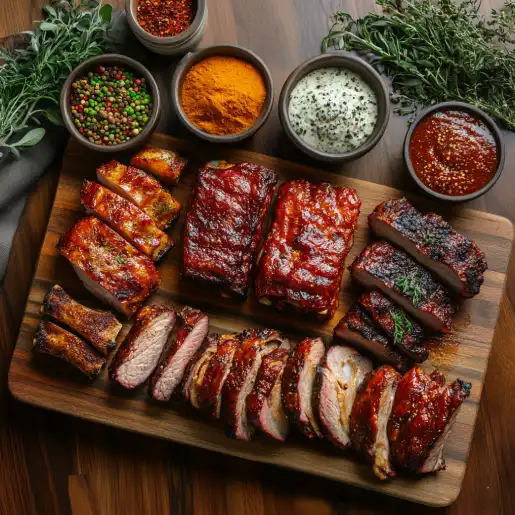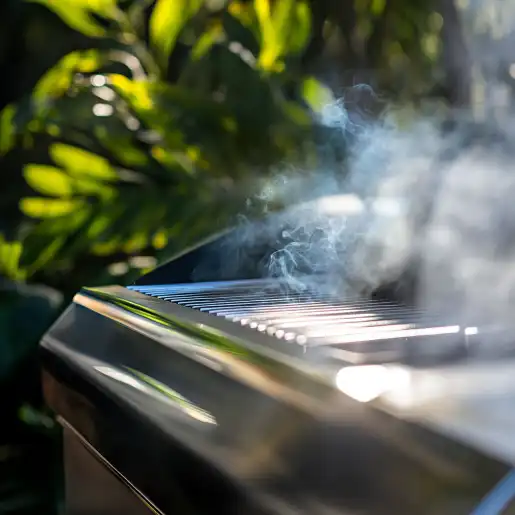Choosing the Wrong Type of Wood
Why Wood Selection Matters

The type of wood you use in your smoker can significantly impact the flavor of your food. Different woods impart different flavors, ranging from sweet and mild to strong and bitter. Using the wrong type can lead to an overpowering or unpleasant taste.
Matching Wood with Protein
A common mistake is not matching the wood to the type of protein you’re smoking. For example, delicate meats like chicken and fish pair beautifully with lighter woods such as apple or cherry. On the other hand, robust meats like beef thrive on stronger woods like hickory or mesquite. Understanding these pairings can make a significant difference in your final dish.
Experimenting with Wood Combinations
While it’s tempting to stick to one type of wood, experimenting with combinations can add layers of complexity to your dishes. Start with simple pairings like apple and oak or cherry and hickory, then adjust based on your taste preferences.
Incorrect Temperature Control
The Importance of Consistent Temperature

One of the biggest challenges for beginner smokers is maintaining a consistent temperature. Fluctuating temperatures can lead to uneven cooking and ruin the texture and flavor of your food. Investing in a good quality digital thermometer can help you keep things on track.
Understanding Temperature Zones
Did you know that smokers often have hot and cold zones? Not knowing this can cause parts of your food to cook faster than others. To ensure even smoking, rotate your food halfway through the cooking process.
The Low and Slow Method
Patience is key when it comes to smoking. Many beginners make the mistake of cooking at too high a temperature in an attempt to speed things up. Remember, low and slow cooking allows the smoke to penetrate the meat, resulting in a tender and flavorful dish. Aim for a temperature range of 225°F to 250°F for most smoking recipes.
Over-Smoking the Meat

Less is More
A common misconception is that more smoke equals better flavor. However, over-smoking can lead to a bitter taste that’s far from enjoyable. Quality trumps quantity when it comes to smoke! Use just enough wood to produce thin, blue smoke instead of thick, white smoke.
Choosing the Right Cut
Some cuts of meat are more forgiving when it comes to smoking. Cuts with higher fat content, like brisket, can handle longer smoking times. In contrast, leaner cuts like chicken breasts or fish require less smoke and shorter cooking times.
Monitoring Smoke Levels
Keep an eye on smoke levels throughout the cooking process. If you notice thick, white smoke, adjust your wood or vents immediately. Consistent monitoring helps prevent that dreaded over-smoked taste.
Improper Meat Preparation
The Art of Seasoning

Simply throwing meat onto the smoker without proper seasoning is a rookie mistake! Seasoning enhances the natural flavors of the meat and complements the smoke beautifully. Whether you opt for a dry rub or marinade, apply it evenly and let it penetrate the meat for a few hours before smoking.
Trimming the Fat
While fat adds flavor, too much can cause flare-ups and uneven cooking. Trim off any excess fat but leave about a quarter-inch on for moisture and flavor.
Resting the Meat
Don’t overlook this important step! Letting your meat rest after smoking allows juices to redistribute, resulting in a more tender bite. Wrap it in foil and let it rest for at least 30 minutes before slicing.
Ignoring the Importance of Vent Settings

Why Vents Matter
Proper airflow is crucial for maintaining temperature and smoke levels in your smoker. Beginners often overlook vent settings, which can lead to temperature spikes and inconsistent smoke.
Top vs. Bottom Vents
Understanding how your smoker’s top and bottom vents work can make a big difference! The bottom vent controls oxygen entering the smoker (affecting fire intensity), while the top vent allows smoke to escape—keep it slightly open to prevent stale smoke buildup.
Adjusting for Weather Conditions
Weather can impact your smoker’s performance too! On windy days, you might need to open the vents more; conversely, on hot days, closing them slightly can help maintain temperature.
Conclusion
Mastering the art of smoking takes time, practice, and a willingness to learn from mistakes. By avoiding these common pitfalls, you’ll elevate your smoker recipes and enjoy delicious smoky flavors every time. Remember: patience, attention to detail, and passion for BBQ are key!Ready to take your smoking skills to the next level? Join our community of BBQ enthusiasts for exclusive recipes, tips, and expert advice. Happy smoking! This version includes all requested modifications while adopting a more conversational tone that engages readers effectively!




1 thought on “Master the Smoke: Avoid These 5 Common Mistakes with Smoker Recipes”